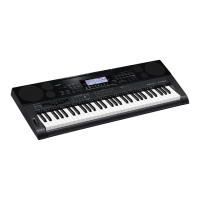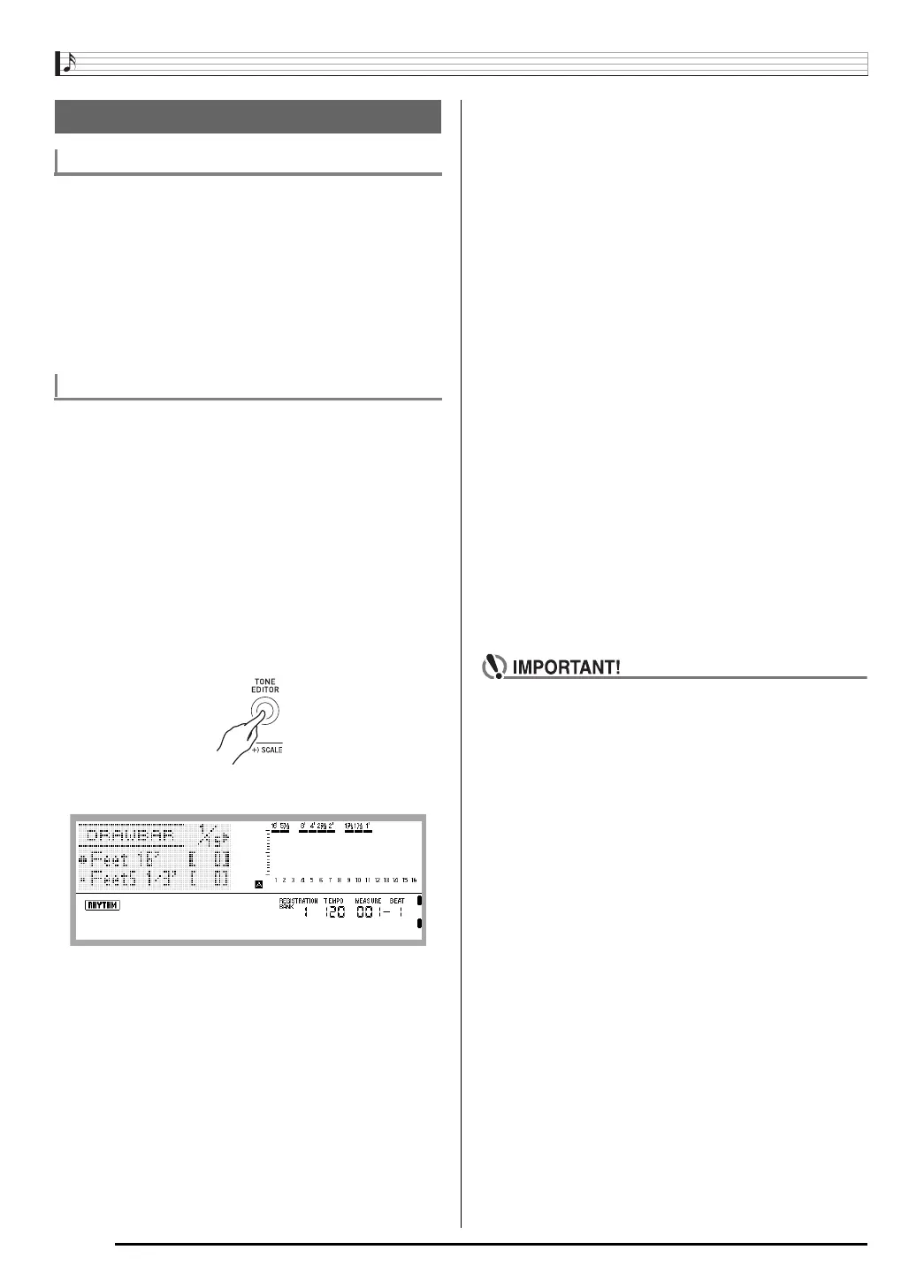Using Drawbar Organ Tones
E-52
Tone areas numbered L:051 through L:100 are for storage of
user drawbar organ tones. You can have up to 50 user
drawbar organ tones stored in memory at one time.
You can recall a user drawbar organ tone by pressing the
R-12 ([L] DRAWBAR ORGAN) button and then using the dial
or the R-14 (–, +) buttons to specify the tone number you
want. After recalling a user drawbar organ tone, you can
perform the same operations as those supported for preset
drawbar organ tones. For more information, see “To select
and play with a drawbar organ tone” (page E-50).
1.
Select the drawbar organ tone you want to edit.
• Perform the procedure under “To select and play with a
drawbar organ tone” (page E-50).
• At this point, you can perform operations with sliders
D-4 (16') through D-12 (1'), and the D-2
(PERCUSSION SECOND) and D-3 (PERCUSSION
THIRD) buttons before starting the tone editing
operation. For details about using the sliders and
buttons, see “Adjusting a Drawbar Organ Tone in Real
Time” (page E-51) and “To configure the level meter to
show the harmonic overtone level of each slider
position” (page E-51).
2.
Press the C-8 (TONE EDITOR) button.
• This displays the drawbar editor screen.
• You can use the R-17 (u, i) buttons to scroll
between pages.
3.
Use the R-17 (t, y) buttons to move the 0 to
the parameter you want to change.
• For information about the operation and the setting
range of each parameter, see “Drawbar Organ Tone
Parameter Settings” (page E-53).
4.
Use the dial or the R-14 (–, +) buttons to change
the setting value.
• Pressing the R-14 (–, +) buttons at the same time
returns a parameter to its initial default setting.
5.
Repeat steps 3 and 4 as required to configure
other parameters.
6.
To store a rhythm after you edit it, hold down
the R-13 (FUNCTION) button as you press the
C-17 (MENU) button.
• This displays the drawbar edit menu.
7.
Press the R-16 (ENTER) button.
• This displays a screen for specifying the destination
user drawbar organ tone number and tone name.
8.
Use the dial or the R-14 (–, +) buttons to select
the destination user drawbar organ tone
number you want.
9.
Use the R-17 (u, i) buttons to move the
cursor to the name character position you want
to change, and then use the dial or R-14 (–, +)
buttons to select the character you want.
• For details about the characters you can input, see
“Supported Input Characters” (page E-160).
• To input a space, press both of the R-14 (–, +) buttons
at the same time.
10.
Press the R-16 (ENTER) button.
• A message (Replace?) will appear asking if you want to
overwrite the data currently in the destination with the
new data. Press the R-14 (YES) button to overwrite.
• The message “Please Wait” will remain on the display
while a data save operation is in progress. Do not
perform any other operation while it is displayed.
Turning off the Digital Keyboard or removing the
memory card can cause Digital Keyboard data to be
deleted or become corrupted. It also can cause the
Digital Keyboard to fail to turn on when the L-1
(POWER) button is pressed. If this happens, refer to
“Troubleshooting” (page E-150).
Editing Drawbar Organ Tones
User Drawbar Organ Tone Numbers
To edit a drawbar organ tone and store it
CTK7000_03_e.fm 52 ページ 2010年7月27日 火曜日 午後3時39分

